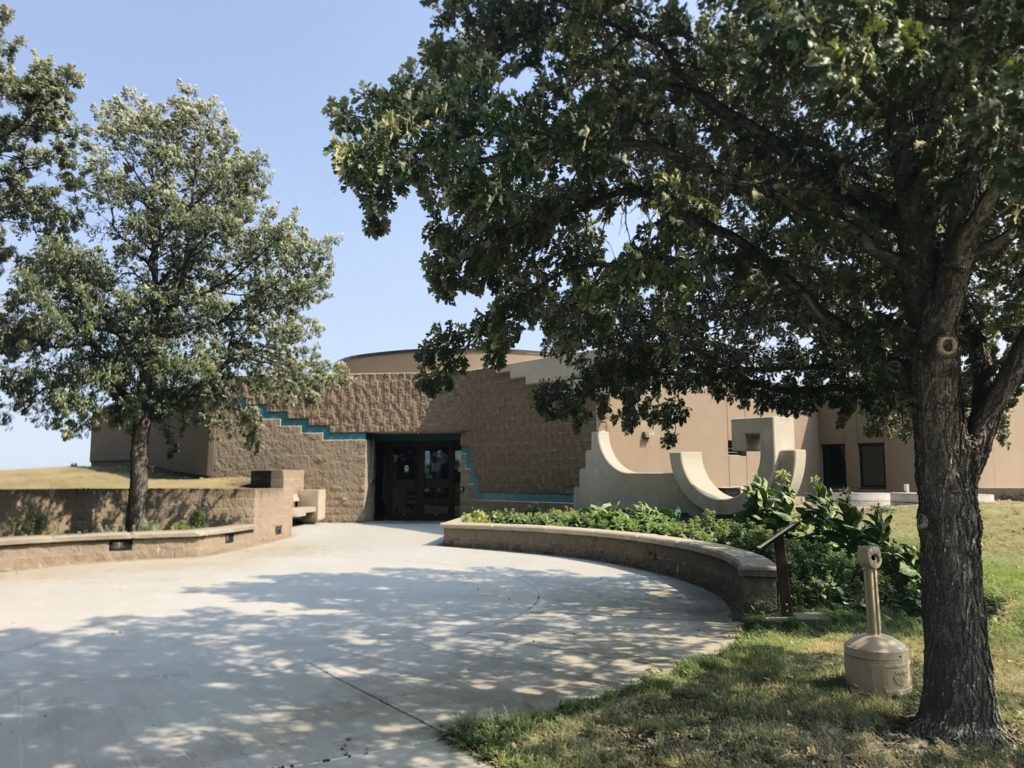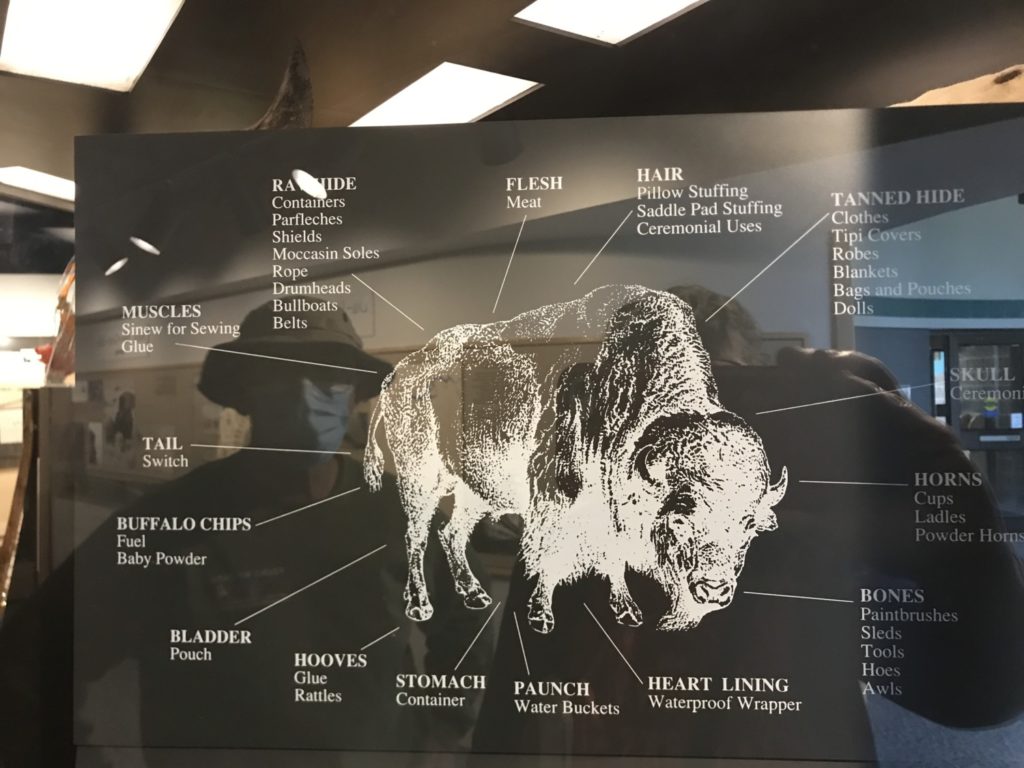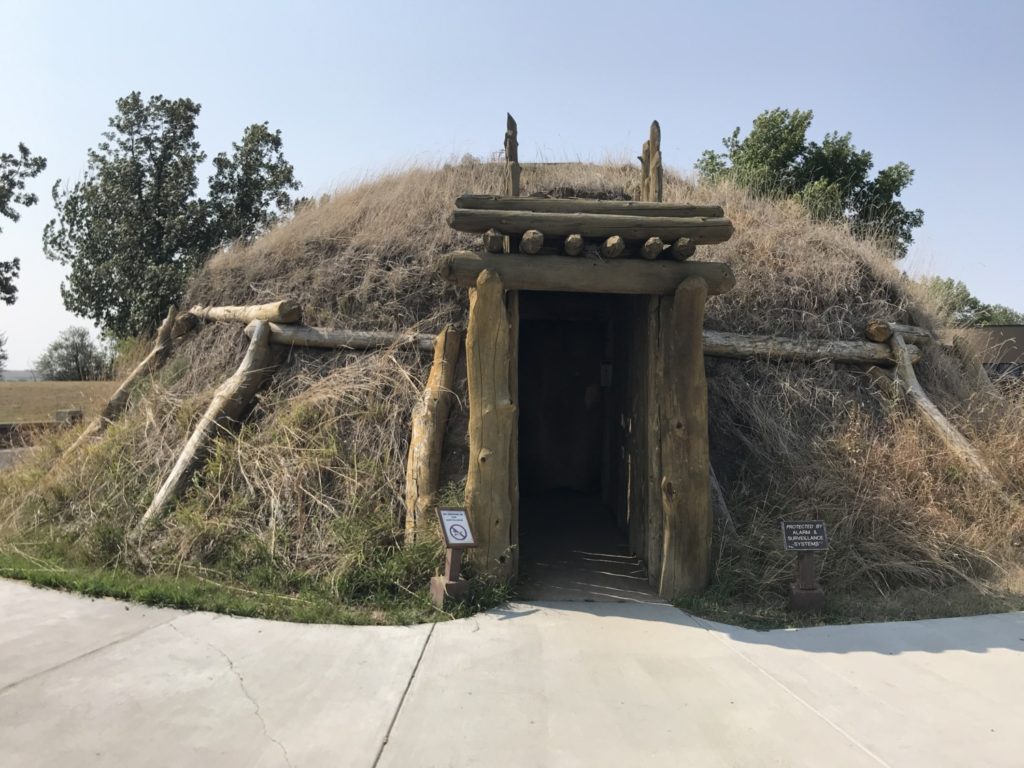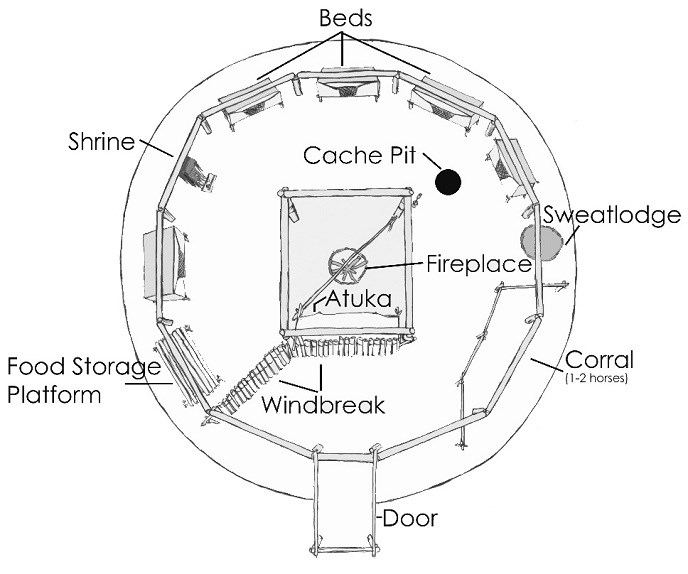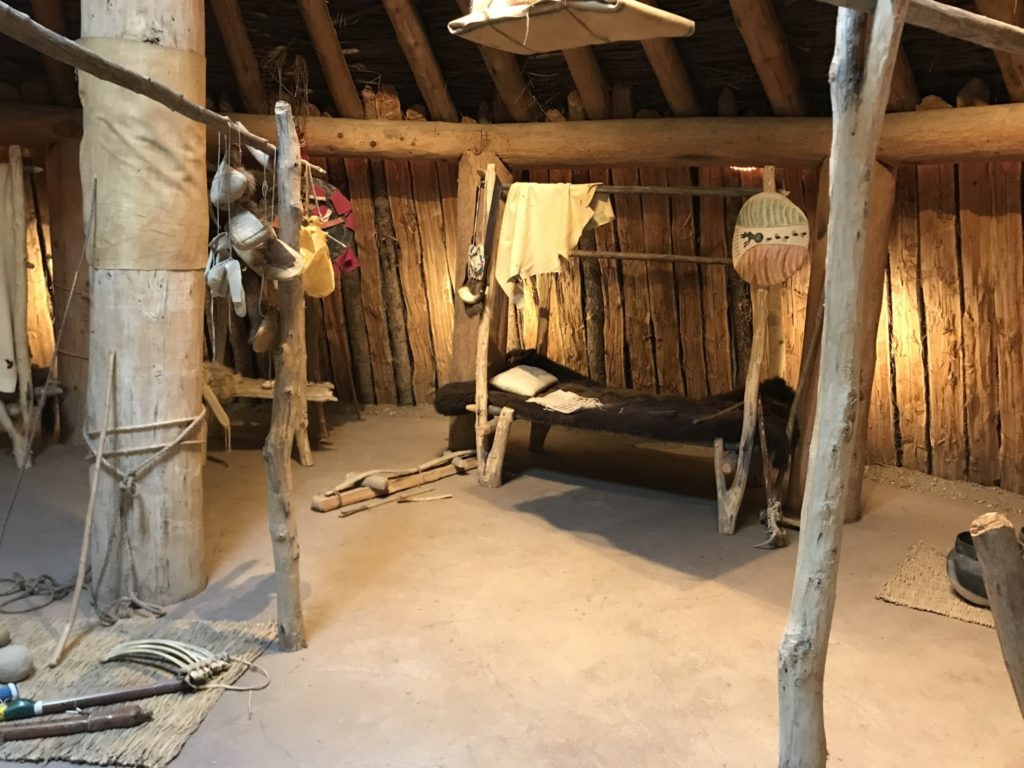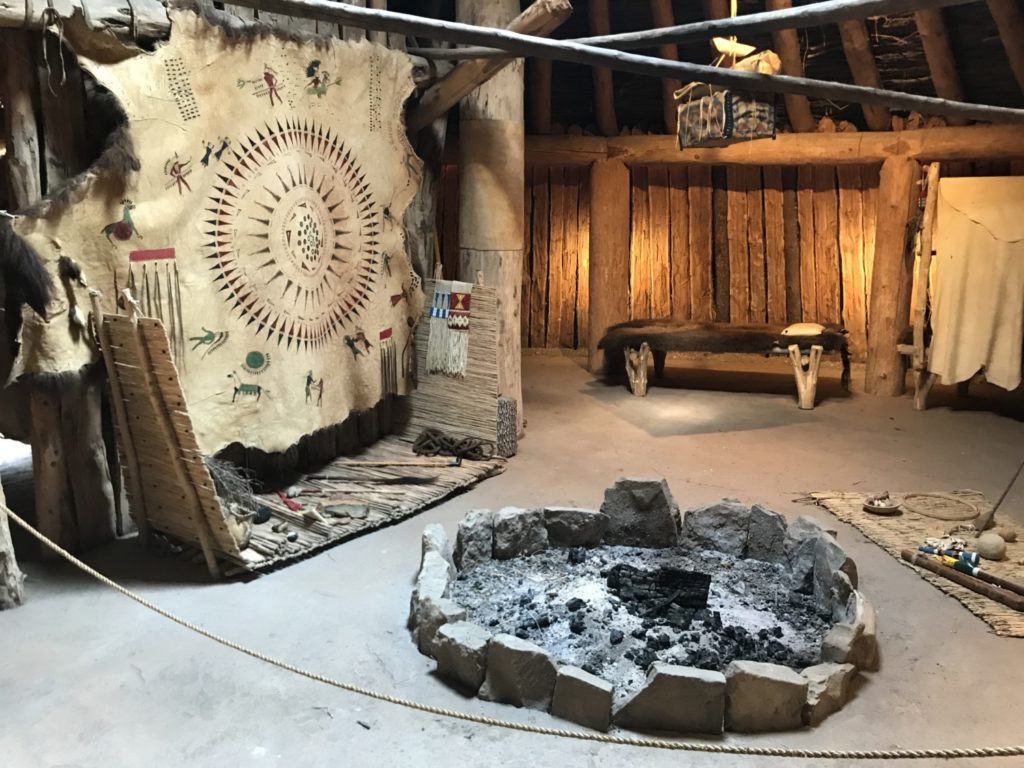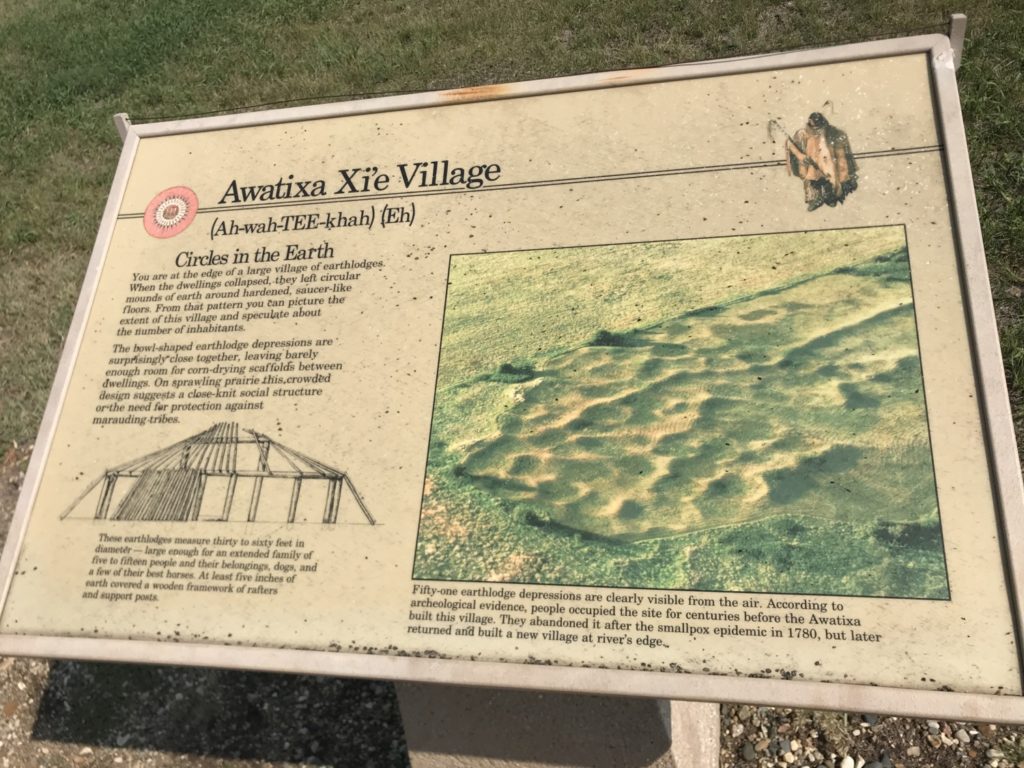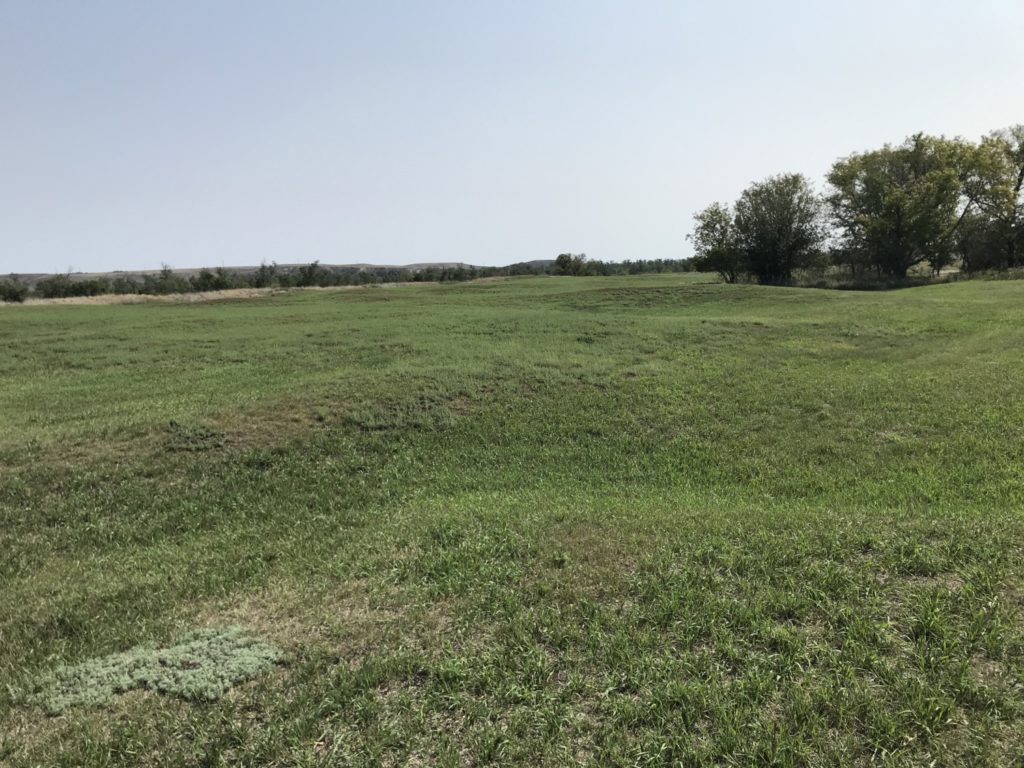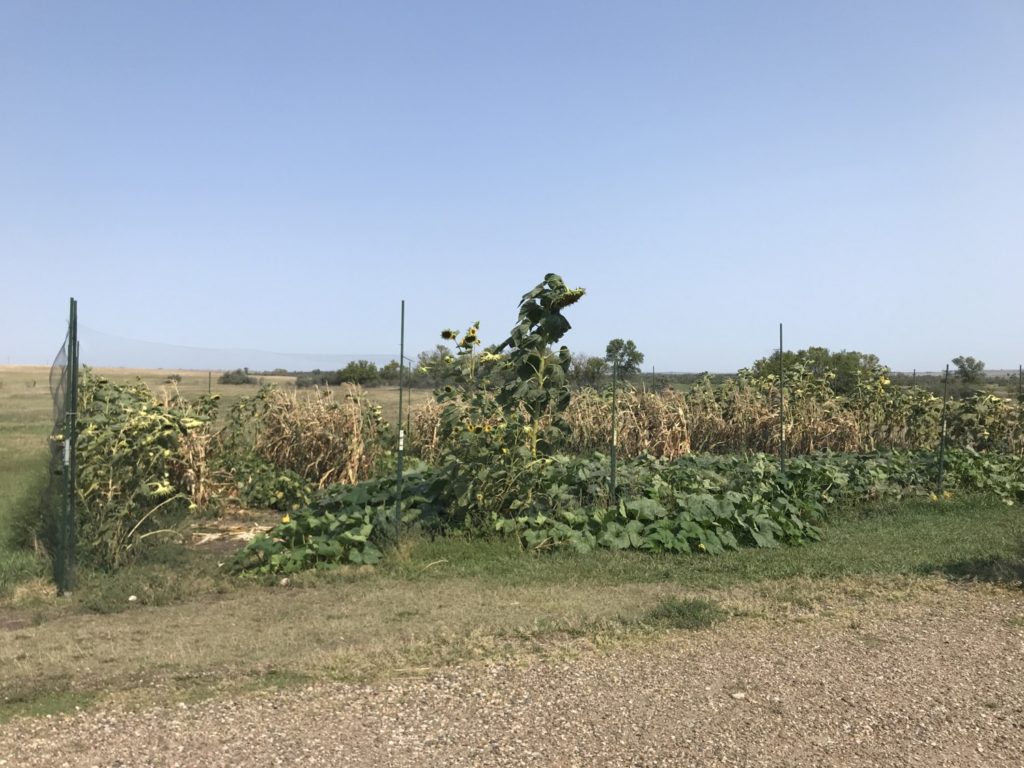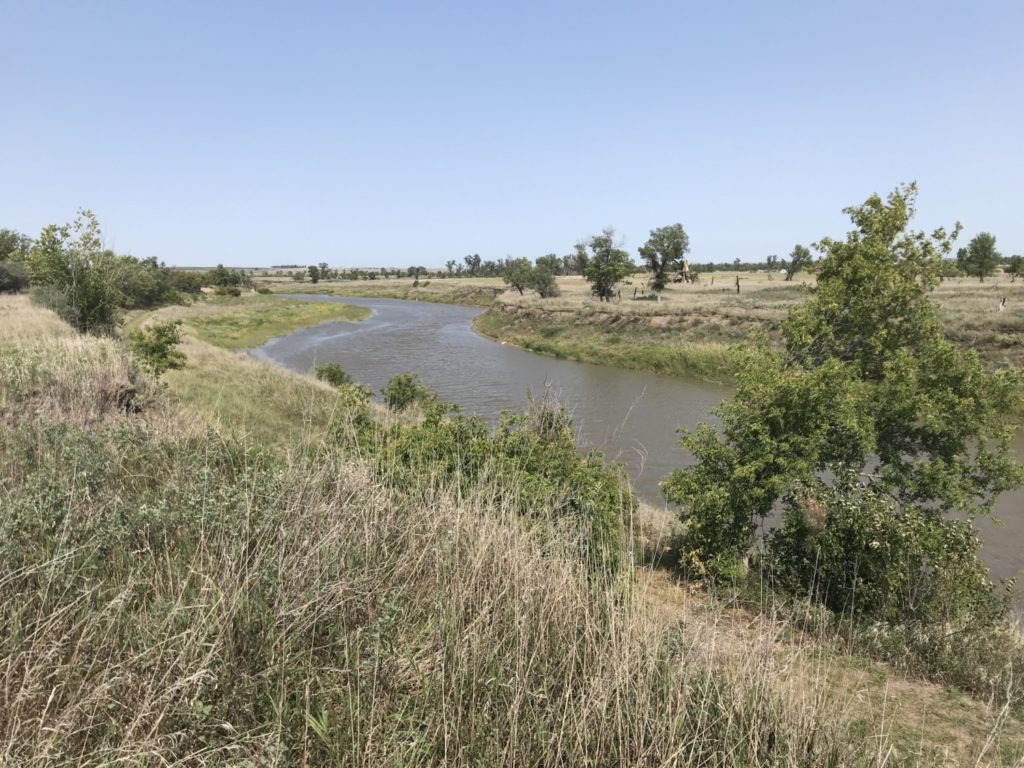Last week I got my final National Park stamp in North Dakota when we visited Knife River Indian Villages National Historic Site. Of course, it helps that there are only three National Park sites in North Dakota, but it still felt good.
Knife River Indian Villages National Historic Site is an interesting place located about an hour from Bismarck. For almost 900 years, the Hidatsa and Mandan tribes lives in earthlodges along the Knife and Missouri Rivers at this site. Both these tribes were agriculturally based and they planted and cared for huge gardens along the rivers. The three villages in this location had around 120 earthlodges each, with 10 to 30 people living in each. They hunted bison and other game, but the tribes were essentially farmers.
One Hidatsa woman said that her tribe had lived in this place forever. 900 years would certainly seem like forever. In fact, the Mandan and Hidatsa creation stories both tell of the Great Spirit creating the people out of mud along the banks of the upper Missouri River. Sacajawea and her husband were living in these villages in 1804 when Lewis and Clark hired Toussaint Charbonneau to be their guide and interpreter.
In 1837 a smallpox epidemic decimated the tribes in the area. Nearly 90% of the Mandan died. The surviving Mandan and Hidatsa joined with the Arikara, another farming tribe, to become the Three Affiliated Tribes. In 1885 the federal government forced the three tribes to abandon their land and homes and move to Fort Berthold Reservation.
Today, the Knife River Indian Villages site preserves the area where the three villages were. A trail surrounds Awatixa Xi’e and Awatixa Villages. You can see the mounds and depressions that used to contain the earthlodges. The National Park Service also built an earthlodge beside the Visitors Center, so visitors can tour it and imagine living in it. Another village, Hidatsa Village, is further north on the other side of the Knife River.
When Tom and I walked through the earthlodge, we were surprised at how comfortable and bright it seemed. The beds were on platforms above the floor and there were caches and platforms for food storage. It was very roomy compared to our RV and we could imagine a large family living in it.
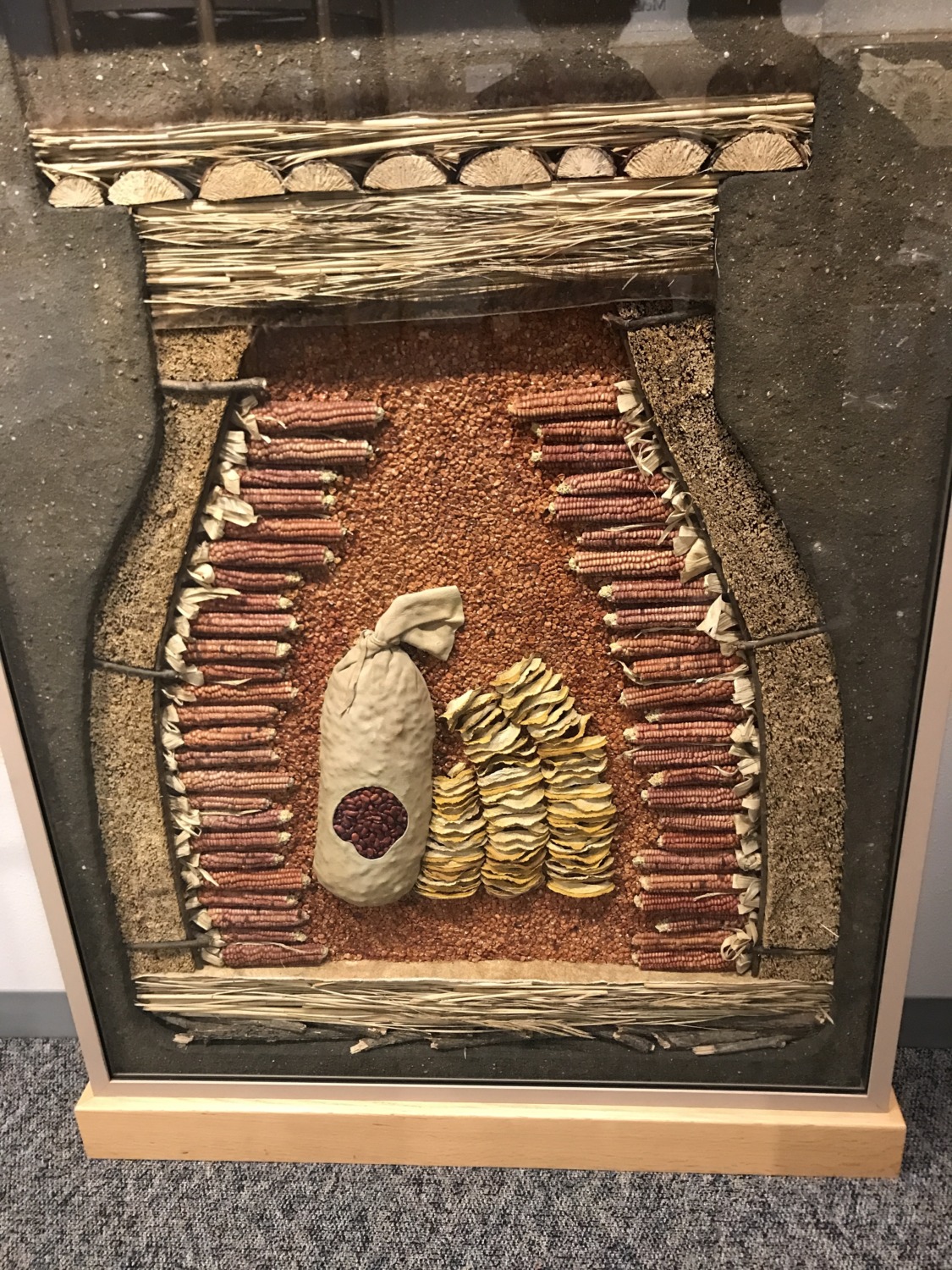
In addition to walking the trail and touring the earthlodge, Tom and I spent some time in the museum and watched the movie about the site. We also talked a bit to Ranger Darien, who we met when he worked the Fort Union Trading Post Rendevous with us.
We enjoyed our visit Knife River Indian Villages National Historic Site, but felt they could have done more to interpret it. It was especially hard to imagine the size of the villages by walking around them. Although we could see the mounds, they didn’t look like much. It would have been helpful to be able to climb a platform to get a better view of the scope of the villages. It is possible, however, that a platform would blow over in the strong North Dakota winds. We saw some other sites that helped with our understanding of these three tribes and I will be writing about them in future posts.


